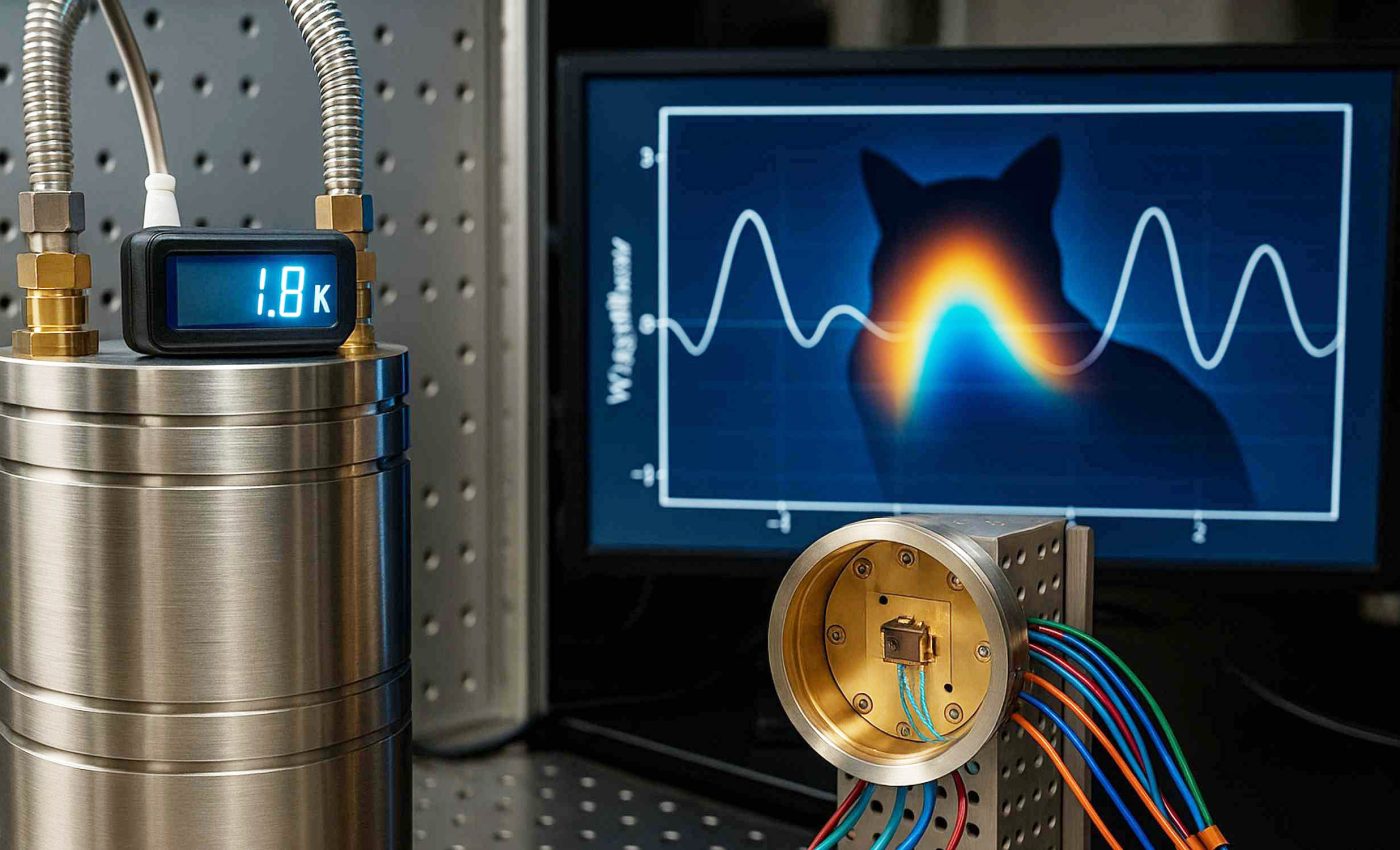
'Hot Schrödinger's cat' states created in the lab, proving that quantum effects don't require extreme cold
Scientists recently found a way to see quantum superposition effects in a system, a Schrödinger’s cat state, that is not cooled to near-absolute zero. Their result challenges the long-held assumption that extreme cold is the only way to maintain fragile quantum states.
They achieved this feat under less rigid conditions, demonstrating that even warm surroundings can show these elusive behaviors.
The lead scientist, Dr. Gerhard Kirchmair, from the University of Innsbruck, said this was a big step in exploring quantum experiments beyond traditional cryogenic setups.
Understanding Schrödinger’s cat – the basics
Schrödinger’s cat is one of the most famous thought experiments in physics. Erwin Schrödinger came up with it in 1935 to illustrate the strange nature of quantum mechanics.
He imagined a cat locked in a sealed box with a radioactive atom, a Geiger counter, a vial of poison, and a hammer.
If the atom decayed, the Geiger counter would detect it, trigger the hammer, and shatter the vial, killing the cat. If the atom didn’t decay, the cat would live.
But quantum theory says the atom exists in a superposition – both decayed and not – until someone observes it. So, in theory, the cat is both alive and dead at the same time until someone opens the box.
The idea sounds absurd, and that’s exactly the point. Schrödinger wasn’t trying to say cats can be undead zombies. He was highlighting the disconnect between how quantum physics behaves on the smallest scales and what we observe in everyday life.
The experiment forces us to question how measurement and observation affect reality. It’s less about the cat and more about the weirdness at the heart of quantum mechanics.
Quantum states at higher temperatures
Many quantum studies rely on cooling systems to very low temperatures to keep external disturbances in check. Researchers often believed thermal energy would scramble any delicate state.
These new experiments highlight that quantum interference can survive at around 1.8 Kelvin, which is much warmer than the ultra-cold temperatures typically used in similar tests. This idea turns the usual cooling requirements upside down.
One way to see if a quantum state remains intact is by measuring the Wigner function, which helps visualize the unique properties of superposition.
Detecting negative regions in this function is an indicator that a system truly behaves in a quantum manner.
The fact that the experiment worked at temperatures 60 times higher than previous norms for the cavity shows a surprising robustness. It suggests that future devices may not need such intense cooling, which would reduce costs and engineering hurdles.
Engineering a “hot Schrödinger’s cat”
Central to this demonstration was a transmon qubit coupled to a microwave resonator, y8ding fine control over the quantum state.
By applying carefully designed pulses, the team produced interference patterns associated with the Schrödinger’s cat concept.
They also used specially adapted protocols to counteract extra thermal noise. Despite starting from a thermally excited background, the interference stood out clearly in their measurements.
The result shows that quantum superposition might persist under conditions once thought too hot for such effects.
“If we can create the necessary interactions in a system, the temperature ultimately doesn’t matter,” said Dr. Kirchmair.
Practically speaking, making quantum states at higher temperatures could open doors for more compact hardware. It might also lead to new methods of integrating quantum circuitry into everyday technologies without the hassle of bulky cooling machines.
Why does any of this matter?
The idea that quantum states can survive at higher temperatures, in less demanding thermal environments, could also reshape how students and smaller research groups approach quantum experiments.
Without the high cost and complexity of ultra-low-temperature systems, more institutions may be able to replicate and build on these findings.
This shift could decentralize access to quantum research, leading to faster innovation and a wider talent pool that contributes to the field.
Affordable platforms that demonstrate real superposition effects could become the new standard in university labs worldwide.
One field that stands to gain from this discovery is the development of nanomechanical oscillators, where ground-state cooling can be especially tricky.
If quantum states can remain intact without heavy refrigeration, manufacturing more accessible devices becomes a realistic goal.
Powerful sensors, ultra-secure communication channels, and advanced computing modules could all benefit from these findings. Such applications would not have to rely solely on cryogenic labs.
Quantum state temperature and the future
By looking beyond the typical notion that heat kills quantum effects, researchers are rethinking strategies for stable quantum platforms.
The outcome hints that temperature alone may not be the biggest obstacle, as long as the system’s interactions are well-designed.
Additional work is needed to understand how large these “hot” quantum states can get. Every success story in warmer conditions adds more confidence that a broader range of environments can still reveal weird quantum phenomena.
Although this experiment centered on a specific setup, the principle behind it could apply to other platforms.
Many scientists hope to refine these protocols and expand them to more complex systems in both university and industrial labs.
The study is published in Science Advances.
—–
Like what you read? Subscribe to our newsletter for engaging articles, exclusive content, and the latest updates.
Check us out on EarthSnap, a free app brought to you by Eric Ralls and Earth.com.
—–













